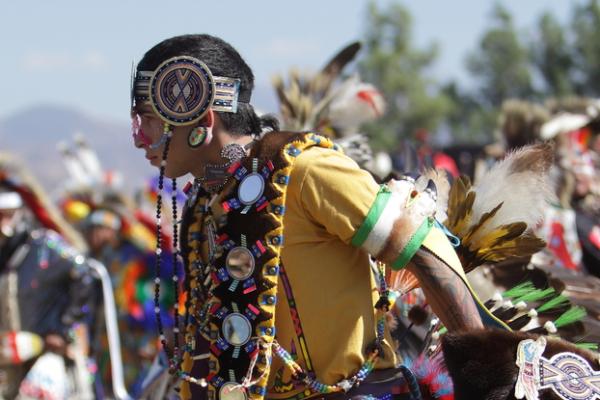The Native American narrative remains largely unknown in U.S. majority culture. It is glaringly absent in most school curriculums, and remains unheard in modern dominant politics. One crucial stream of Native culture I’ve recently come to learn about is the destructive legacy of Christian-run Indian boarding schools.
What began with genuinely good intentions (in those days, “European” norms were viewed as superior, “sameness” seemed like a good idea, and the threat of legitimate genocide lingered over tribes) rapidly deteriorated, with Christian boarding schools becoming institutions of forced assimilation and abuse.
Beginning in the 1800s and lasting into the 20th century, Native children were forcibly removed from their families and sent to live in boarding schools. Finding the task of “civilizing” Native adults beyond its ability, the federal government delegated the task of “normalization” to churches, which could educate, or, inculcate, children from a young age.
Originally, these schools were located close enough to the reservation that a child could at least return home on weekends. However, when it was discovered they were still able to practice their culture at home with their families, the children were sent to boarding schools, often thousands of miles away, to ensure they were entirely stripped of their traditions and family ties.
In 1872, the Board of Indian Commissioners, a body of religious men established by Congress to undertake the “Christianization” of Native Americans, allotted 73 Indian agencies to various Christian denominations. Among them were Methodist, Presbyterian, Episcopalian, Catholic, Baptist, Unitarian, and Lutheran churches. Each denomination was responsible for the supervision of Indian boarding schools within its given territory, and was complicit in carrying out policies of cultural genocide that played out in the classroom.
Native schoolchildren were taught to be ashamed of their identity. Upon arrival to the school, students were systematically conditioned to reject their Indian-ness. Their hair was cut, and they were dressed in the dominant culture fashion, forced to abandon their native languages, forbidden to use their native names, and taught to repudiate their “pagan” traditions. “Let all that is Indian within you die,”was the commission from Rev. A. J. Lippincott during a Carlisle Indian School graduation.
Physical, emotional, and sexual abuses were documented at Christian-run Indian boarding schools. Student punishments included beatings, physical restraints, and isolation in dark cellars. Many students chose to run away.
Additionally, intentional over-enrollment led to unhealthy living conditions. Insufficient supplies and unsanitary conditions resulted in lack of food and high rates of illness. The death rate for children at Carlisle Indian School in Pennsylvania was 3.5-4.5 timesthe national average at that time. Survivors report that the dead were buried anonymously in mass graves, sometimes on school grounds. Apparently, the “kill the Indian, save the man”mantra of Capt. Richard Pratt, Civil War volunteer and founder of Carlisle Indian Industrial School, proved ominously true.
This tragic loss of culture has played itself out in a legacy of generational trauma in the Native American community. After returning to the reservation, many former students felt isolated and removed from their Indian culture. Reentry to their native homes left them with a sense of self-loathing. Loss of language and the knowledge of tribal history and traditions made it a struggle to re-assimilate. With these deficits, along with a history of abuse they suffered at school, many former students turned to alcohol, drugs, and suicide to relieve their pain. Others, enacting Paulo Freire’s idea of the oppressed becoming oppressors, internalized the abuse done to them, and became violent toward their own families. The devastation done to tribal communities as a result of boarding school policies cannot be overestimated.
Why does the lingering social impact of Christian-run Indian boarding schools still matter more than 100 years later? Because the serial traumas are now realities enacted in Native communities. The abuse of those who had attended the schools, now community elders, filters down to their children and grandchildren. Repercussions are still being manifested throughout tribal societies.
The personal loss of identity and the broader destruction of indigenous culture must be redressed through participatory structures that include all stakeholders, including victims and perpetrators, Natives and non-Natives. Steps to reconciliation will begin when majority culture can fully listen to and learn from the Native American experience. Only then will the foundation of repentance, forgiveness, and healing be laid.
What can churches do in the way of reparation to our Native American brothers and sisters? What is an appropriate response for unfolding generational trauma? For one, the historical abuse can be publicly acknowledged, and truth telling can begin. A meaningful and sincere apology is a good place to start. To take affirmative steps to rectify the wrongs done to Native communities, a conversation between tribes and faith communities is called for. After all, it was the faith community that originally championed the idea of boarding schools. Churches can research their denomination’s role in the implementation of Native American boarding school policies. We can identify actions to express support for the healing of both victims and perpetrators.
What happened is a part of our shared history as Americans. It is a deeply felt national wound. May the Spirit give us eyes to see, hands to restore, and courageous hearts to build up the broken places in one another.
Anna Hall is campaigns assistant for Sojourners.
Photo: Digital Media Pro/Shutterstock
Got something to say about what you're reading? We value your feedback!
